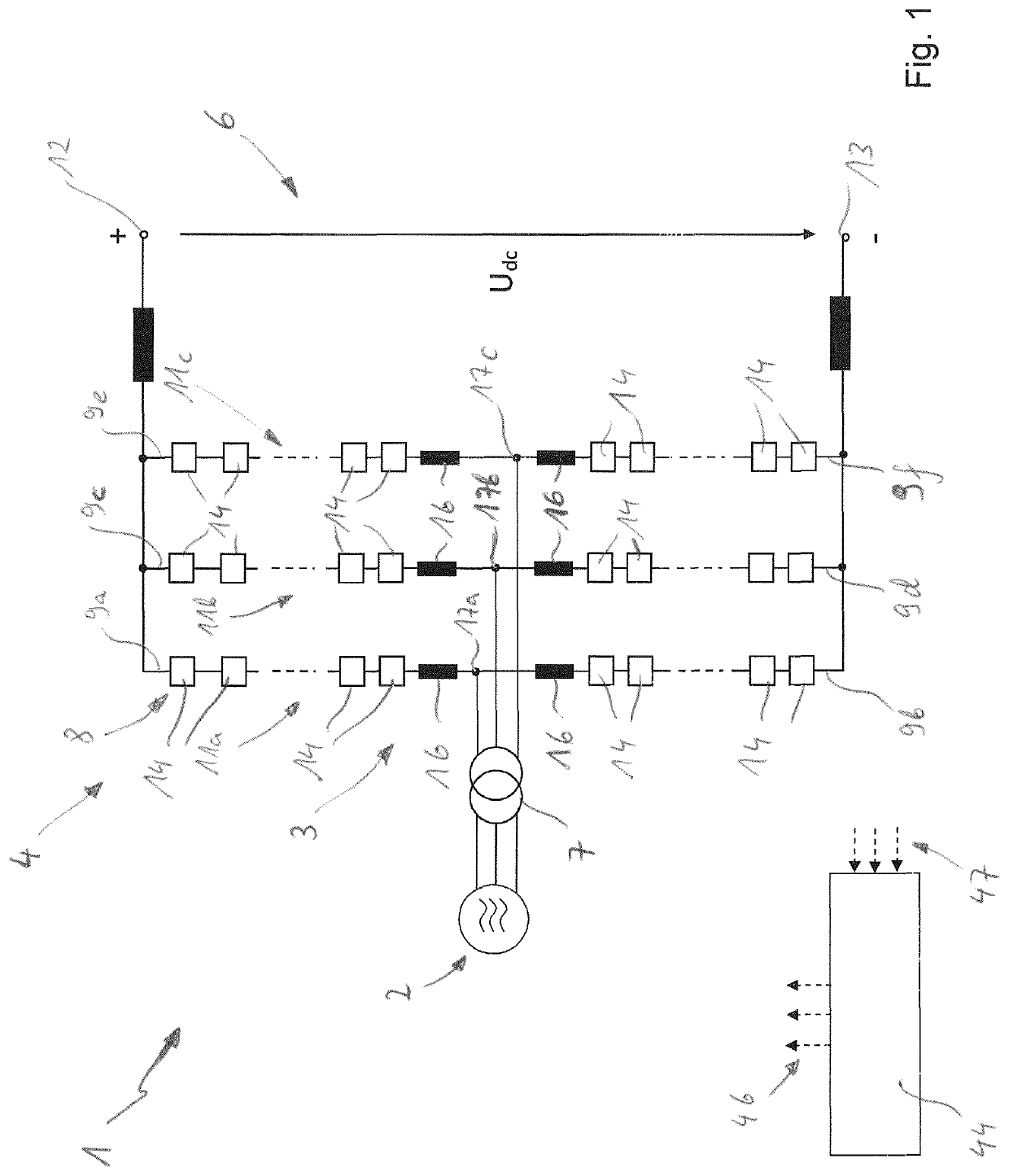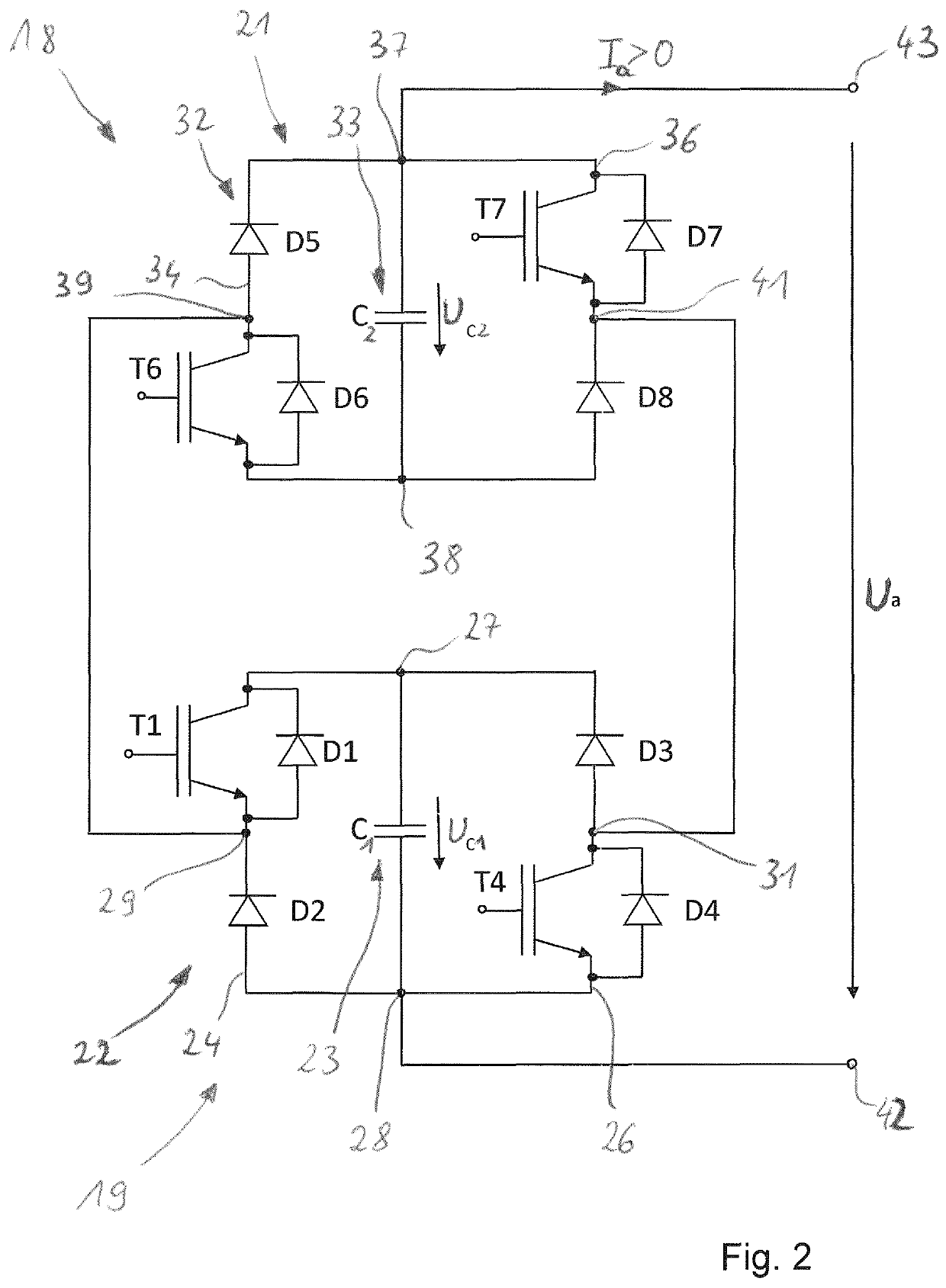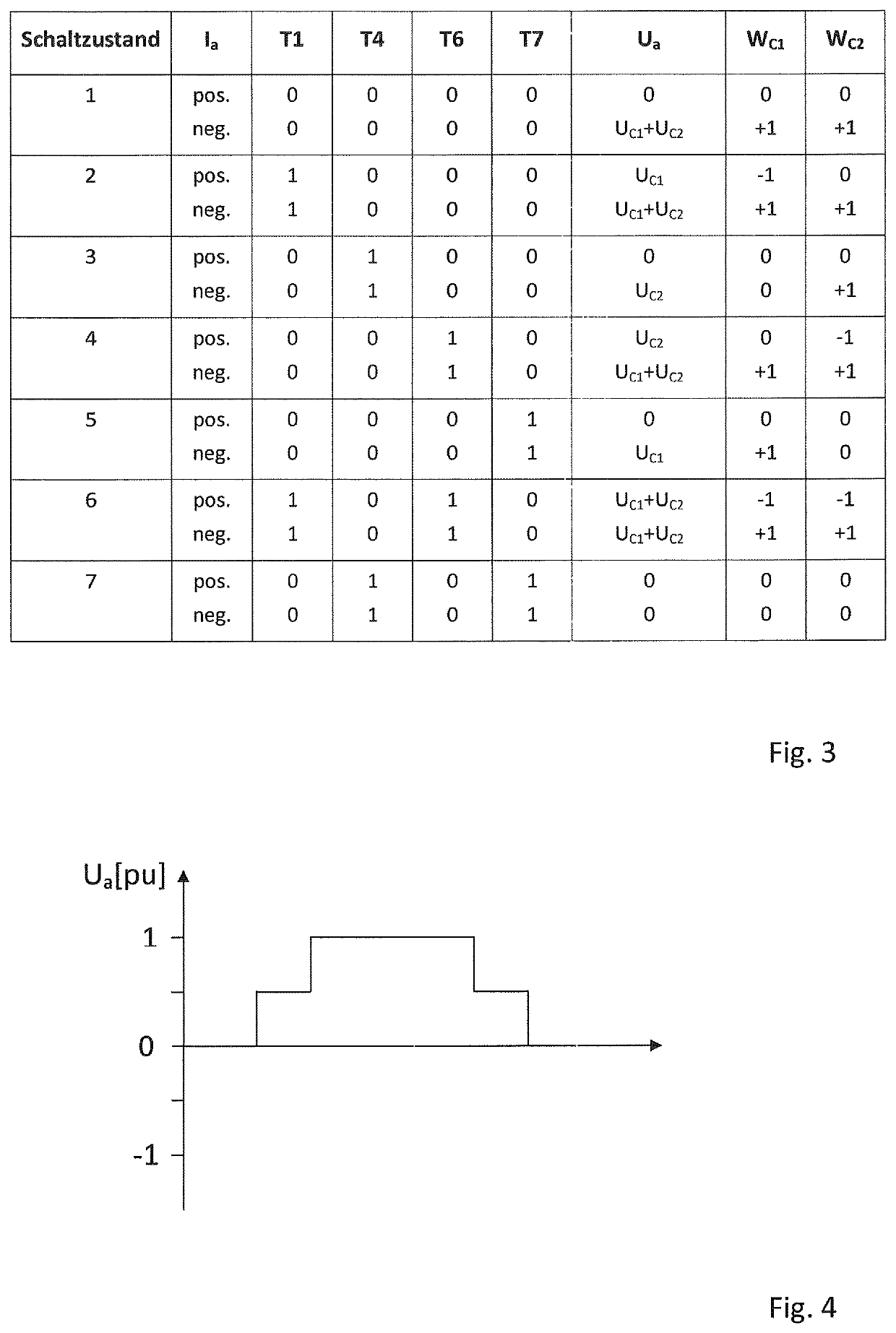Dual submodule for a modular multilevel converter and modular multilevel converter including the same
a multi-level converter and modular technology, applied in the direction of power conversion systems, climate sustainability, efficient power electronics conversion, etc., can solve the problems of increasing the complexity of the circuit, and increasing the cost of the converter as a whole, so as to achieve low line loss in operation, the effect of being convenient to use and easy to us
- Summary
- Abstract
- Description
- Claims
- Application Information
AI Technical Summary
Benefits of technology
Problems solved by technology
Method used
Image
Examples
Embodiment Construction
[0037]Reference will now be made to the embodiments of the invention, which are illustrated in the drawings. It should be understood that the embodiments illustrated in the drawings are merely exemplary and do not limit the invention as such. Rather, the embodiments are merely intended to explain possible embodiments and enable the person skilled in the art to execute the invention. It must also be understood that, in an effort to provide a concise description of possible embodiments, not all of the details covered by the scope of the invention can be given.
[0038]FIG. 1 shows a highly simplified illustration of system 1 that can represent e.g. a high-voltage or medium-voltage DC distribution system for electrical energy transmission at high or medium DC voltages. Such a system could be used, for example, for coupling DC voltage applications to alternating current networks, e.g. photovoltaic or busbar systems with DC voltage or DC voltage networks. In addition, such a system can also...
PUM
 Login to View More
Login to View More Abstract
Description
Claims
Application Information
 Login to View More
Login to View More - R&D Engineer
- R&D Manager
- IP Professional
- Industry Leading Data Capabilities
- Powerful AI technology
- Patent DNA Extraction
Browse by: Latest US Patents, China's latest patents, Technical Efficacy Thesaurus, Application Domain, Technology Topic, Popular Technical Reports.
© 2024 PatSnap. All rights reserved.Legal|Privacy policy|Modern Slavery Act Transparency Statement|Sitemap|About US| Contact US: help@patsnap.com










